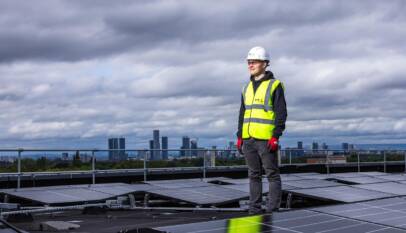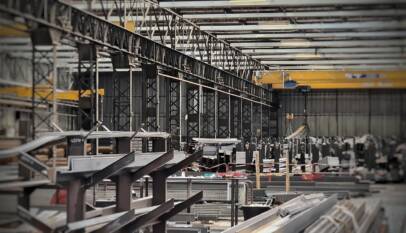
Solar powered glass integrates photovoltaic technology into transparent surfaces, allowing it to generate electricity while maintaining clarity. This innovation enables windows and facades to harness sunlight, turning buildings into energy producers without compromising design.
It offers a practical solution for sustainable energy in urban environments where space for traditional solar panels is limited. By blending function with aesthetics, solar powered glass can reduce reliance on external power sources and lower energy bills.
As technology advances, its efficiency and applications continue to expand, making it a promising option for green building projects and smart cities.
Understanding Solar Powered Glass
Solar powered glass integrates photovoltaic functions into transparent materials, converting sunlight into electricity while serving as windows or façades. It involves various materials and technologies to optimize energy capture without compromising transparency or aesthetics.
How Solar Powered Glass Works
Solar powered glass contains thin layers of photovoltaic cells embedded within or coated on the glass surface. These cells absorb sunlight and convert it directly into electrical energy through the photovoltaic effect.
Electricity generated is typically low-voltage direct current, which can power devices, lighting, or be stored in batteries. The glass maintains transparency by using materials that selectively absorb certain light wavelengths, allowing visible light to pass through while harvesting solar energy.
This dual functionality allows buildings to generate power without requiring traditional solar panels. The integration can be seamless in windows, skylights, or curtain walls, contributing to energy-efficient building designs.
Types of Solar Powered Glass
There are mainly two categories: transparent solar glass and semi-transparent solar glass. Transparent variants maximize visible light transmission while converting infrared or ultraviolet light to electricity.
Semi-transparent glass balances energy generation and daylight, offering partial opacity for privacy or shading. This type is common in office buildings where controlled light levels are needed.
Building Integrated Photovoltaics (BIPV) refer to solar glass products directly integrated into building structures. These types reduce the need for separate solar panels and contribute to the building’s thermal insulation properties.
The choice depends on application requirements such as light transmission, power output, and aesthetic needs.
Key Technologies Used
Thin-film photovoltaics are widely used in solar powered glass due to their flexibility and low weight. Materials like amorphous silicon, cadmium telluride, and copper indium gallium selenide (CIGS) enable efficient light absorption.
Organic photovoltaic cells (OPVs) offer potential for lightweight, flexible solar glass with customizable transparency and color. However, their durability remains a challenge.
Perovskite solar cells are emerging for their high efficiency and tunable optical properties, potentially outperforming traditional thin films.
Incorporating transparent conductive oxides (TCOs) like indium tin oxide (ITO) allows electrical conductivity without blocking light. These layers are essential for current collection in solar glass.
Applications and Benefits
Solar powered glass offers a unique combination of energy generation and transparent design, making it adaptable to various settings. Its use improves energy efficiency while supporting sustainable building practices.
Residential and Commercial Uses
In residential settings, solar powered glass can replace traditional windows, generating electricity without compromising natural light. This helps homeowners reduce electricity bills and decreases reliance on grid power.
Commercial buildings benefit by integrating solar glass into facades, skylights, and curtain walls. Such integration allows large surface areas to produce energy, supporting high energy demands and contributing to corporate sustainability goals.
The technology suits various climates and scales, from small homes to large offices. It also enhances property value by incorporating renewable energy sources directly into building materials.
Integration in Architecture and Design
Solar powered glass supports innovative architectural designs by functioning as both a building envelope and a power source. Architects use it to maintain aesthetic appeal while optimizing functionality.
This glass can be tailored to different transparency levels and colors without losing efficiency. It allows the creation of visually striking façades that meet energy generation needs.
Moreover, solar glass reduces the need for bulky solar panels, enabling sleeker, more modern building designs. Its seamless appearance integrates well with existing structures or new builds.
Energy Efficiency and Environmental Impact
Solar powered glass improves energy efficiency by converting sunlight into electricity on-site, cutting transmission losses. This localized generation reduces overall energy consumption from fossil fuels.
It lowers carbon footprints by offsetting greenhouse gas emissions tied to conventional power sources. Buildings equipped with solar glass contribute to cleaner urban environments.
Maintenance is minimal compared to traditional solar panels, and the glass can last for decades. Its sustainable production and usage align with green building certifications and regulations.
House for Sale in Mississauga: Your Guide to the Best Neighborhoods and Prices
Finding a house for sale in Mississauga means accessing a diverse real estate market that …




